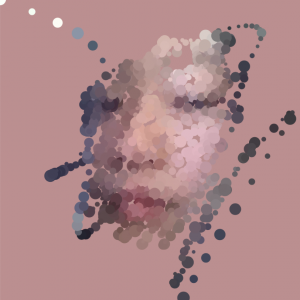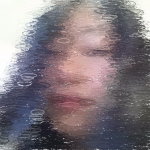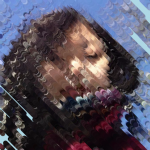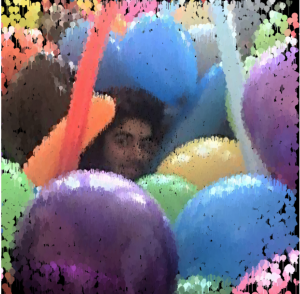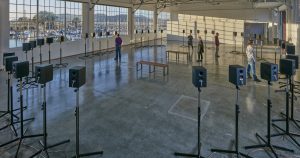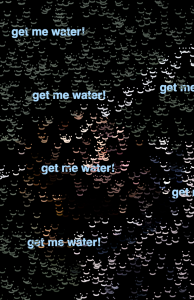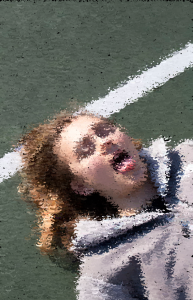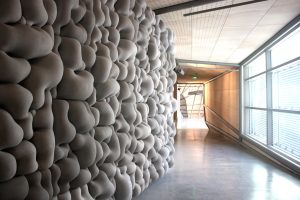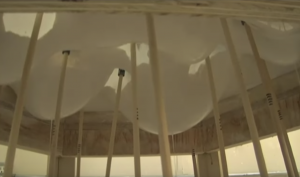This post is a response to rjpark’s Looking Outwards 04 on the Artist Andrius Šarapovas’ room-sized interactive musical sculpture. The installation uses an algorithm to take 4G data and convert it into sound, consisting of 16 notes: C, D, F and G, spread across four octaves.
rjpark commented mostly on the inherent simplicity yet external complexity of the project—how the 77 individual units combined and placed throughout the room created such a complex soundscape. While I agree on the impressiveness of the generated soundscape, I think the installation is actually inherently pretty complex, due to all the filters and “instruments” those 16 notes are being played from (a metal bar, sound activator, sound damper, resonator, and mechatronics). I’m actually really curious how the network data was converted into sounds, and what choices were made in the formulation of the algorithm. Do the four notes mean anything in correlation to the data, or were the just chosen to create an appealing chord? What do the different textures of sound stand for? Overall, I like the end product a lot, but like many other projects which map data to a different output (sculpture, sound, visuals, etc), I wish there was more correlation between the input and output; otherwise the end products feel beautiful, but arbitrary.
![[OLD FALL 2018] 15-104 • Introduction to Computing for Creative Practice](../../../../wp-content/uploads/2020/08/stop-banner.png)
